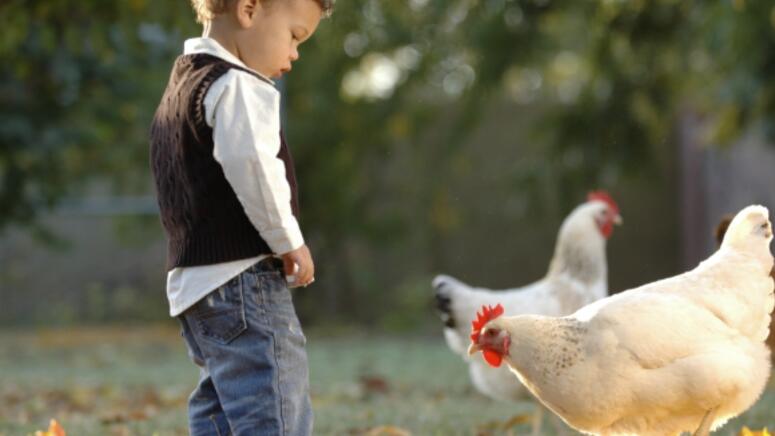
Posted by Laura Hepburn, Wed, May 29, 2013
Well, Memorial Day has come and gone and the summer heat is here to stay. With that in mind, it is important to maintain a cool environment for your flock. All across the country, mid-summer temperatures can reach 90°+ Fahrenheitwith high humidity. Although chickens are very adaptable to weather changes, they usually perform at their best around 75° Fahrenheitand below.
Consistently high summer temperatures can cause your chickens to suffer from heat stress and overheating, or even halt their egg-laying process. Among heavier breeds, extreme heat can even cause death. Thankfully, there are some things you can do to help combat the high summer temperatures.
In no particular order, here are the top eight tips for keeping your chickens cool in the summer:
1. Add electrolytes to their water.
Electrolyte tablets are important for extreme heat and can prevent dehydration.
2. Avoid foods such as corn and scratch.
Corn and scratch require longer digestion processes, which create more body heat. Instead, feed your chickens fresh fruit and vegetables, such as watermelon, to keep them cool.
3. Keep cold water available 24/7.
This tip is pretty self-explanatory, but may be the most important. The cold water will regulate the chickens’ body temperature and keep them cool. Make sure it is always available so your chickens can regulate their water intake themselves.
4. Install a fan in the coop.
This tip isn’t always possible without messing up the structure of the coop, but a small fan can circulate air and keep your flock cooler during the summer months. Caution: Be very careful about electrical wiring exposure. Accidents can occur if exposed wiring gets wet or your chickens break it.
5. Offer shade for chickens.
Again, this is pretty self-explanatory, but can make a huge difference. Without shade, chickens won’t have any place of refuge in which to escape the heat. You could add a small table over a corner of your coop under which your chickens can rest and enjoy the shade. In extreme heat, any small difference helps.
6. Keep interaction with the flock at a minimum.
Interaction with your chickens causes them to be more active and create more heat. On extremely hot days, try to leave your chickens alone and check on them only as necessary.
7. Spray cold water around the coop.
Spraying around the coop and the roof can result in evaporative cooling for your chickens. You can also create small pools of water for the chickens to wade in and keep themselves cool.
8. Offer frozen treats.
Fill a large Tupperware container with berries and water and freeze it overnight. Leave the container out the next day for your chickens so they can pick at the frozen berries and stay cool. You can also slice a watermelon into quarters and freeze it for a similar result.
So, there are some tips on keeping your chickens cool during the hot summer months. Always remember to monitor your chickens, as often you are the best judge of whether or not a chicken is suffering from excessive heat. We are always interested in the behavior of your flocks and would love to hear any stories about how you have handled the summer heat with your chickens.
Do you have your own tips for keeping chickens cool in heated conditions? Share them in the comments below!
More Blogs from Laura Hepburn:
- https://www.mannapro.com/homestead/bid/128859/Letting-a-Broody-Hen-Hatch-Chicks-Diary-of-a-First-Timer
- https://www.mannapro.com/homestead/bid/137184/5-Situations-When-Goats-Benefit-From-Calf-Manna
- https://www.mannapro.com/homestead/bid/117961/Hatching-Your-Own-Baby-Chicks-Pros-Cons
- https://www.mannapro.com/homestead/bid/118669/celebrities-who-aren-t-too-chicken-to-raise-chickens
- https://www.mannapro.com/homestead/bid/137575/4-Frequently-Asked-Questions-About-Calf-Manna-for-Rabbits
- https://www.mannapro.com/homestead/bid/155897/Chicken-Breeds-Selection-For-A-Rainbow-Egg-Basket
- https://www.mannapro.com/homestead/5-tips-for-dealing-with-broody-hens
- https://www.mannapro.com/homestead/bid/145273/chicken-breeds-spotlight-rhode-island-reds
Featured Products

